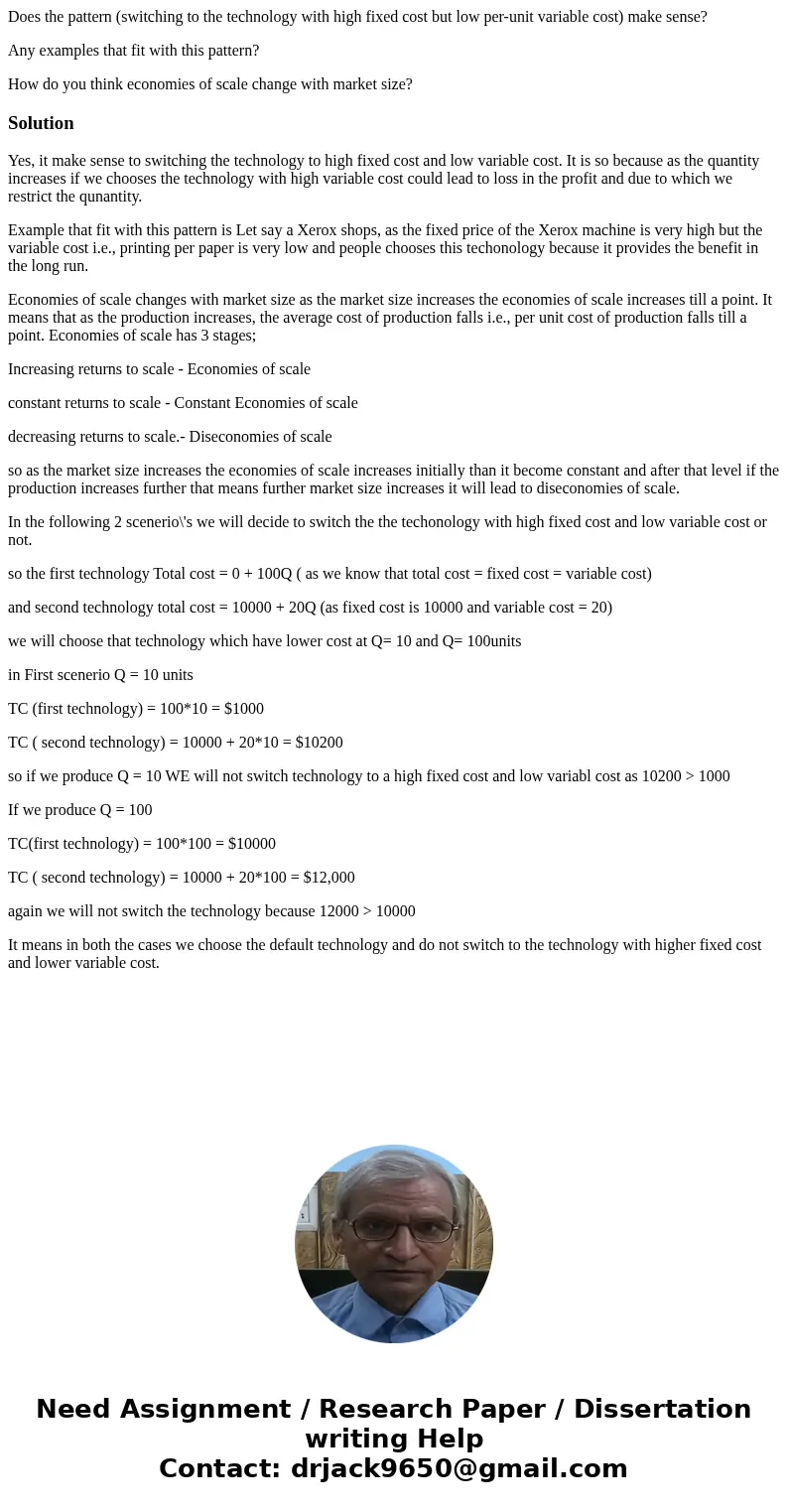Does the pattern switching to the technology with high fixed
Does the pattern (switching to the technology with high fixed cost but low per-unit variable cost) make sense?
Any examples that fit with this pattern?
How do you think economies of scale change with market size?
Solution
Yes, it make sense to switching the technology to high fixed cost and low variable cost. It is so because as the quantity increases if we chooses the technology with high variable cost could lead to loss in the profit and due to which we restrict the qunantity.
Example that fit with this pattern is Let say a Xerox shops, as the fixed price of the Xerox machine is very high but the variable cost i.e., printing per paper is very low and people chooses this techonology because it provides the benefit in the long run.
Economies of scale changes with market size as the market size increases the economies of scale increases till a point. It means that as the production increases, the average cost of production falls i.e., per unit cost of production falls till a point. Economies of scale has 3 stages;
Increasing returns to scale - Economies of scale
constant returns to scale - Constant Economies of scale
decreasing returns to scale.- Diseconomies of scale
so as the market size increases the economies of scale increases initially than it become constant and after that level if the production increases further that means further market size increases it will lead to diseconomies of scale.
In the following 2 scenerio\'s we will decide to switch the the techonology with high fixed cost and low variable cost or not.
so the first technology Total cost = 0 + 100Q ( as we know that total cost = fixed cost = variable cost)
and second technology total cost = 10000 + 20Q (as fixed cost is 10000 and variable cost = 20)
we will choose that technology which have lower cost at Q= 10 and Q= 100units
in First scenerio Q = 10 units
TC (first technology) = 100*10 = $1000
TC ( second technology) = 10000 + 20*10 = $10200
so if we produce Q = 10 WE will not switch technology to a high fixed cost and low variabl cost as 10200 > 1000
If we produce Q = 100
TC(first technology) = 100*100 = $10000
TC ( second technology) = 10000 + 20*100 = $12,000
again we will not switch the technology because 12000 > 10000
It means in both the cases we choose the default technology and do not switch to the technology with higher fixed cost and lower variable cost.

 Homework Sourse
Homework Sourse